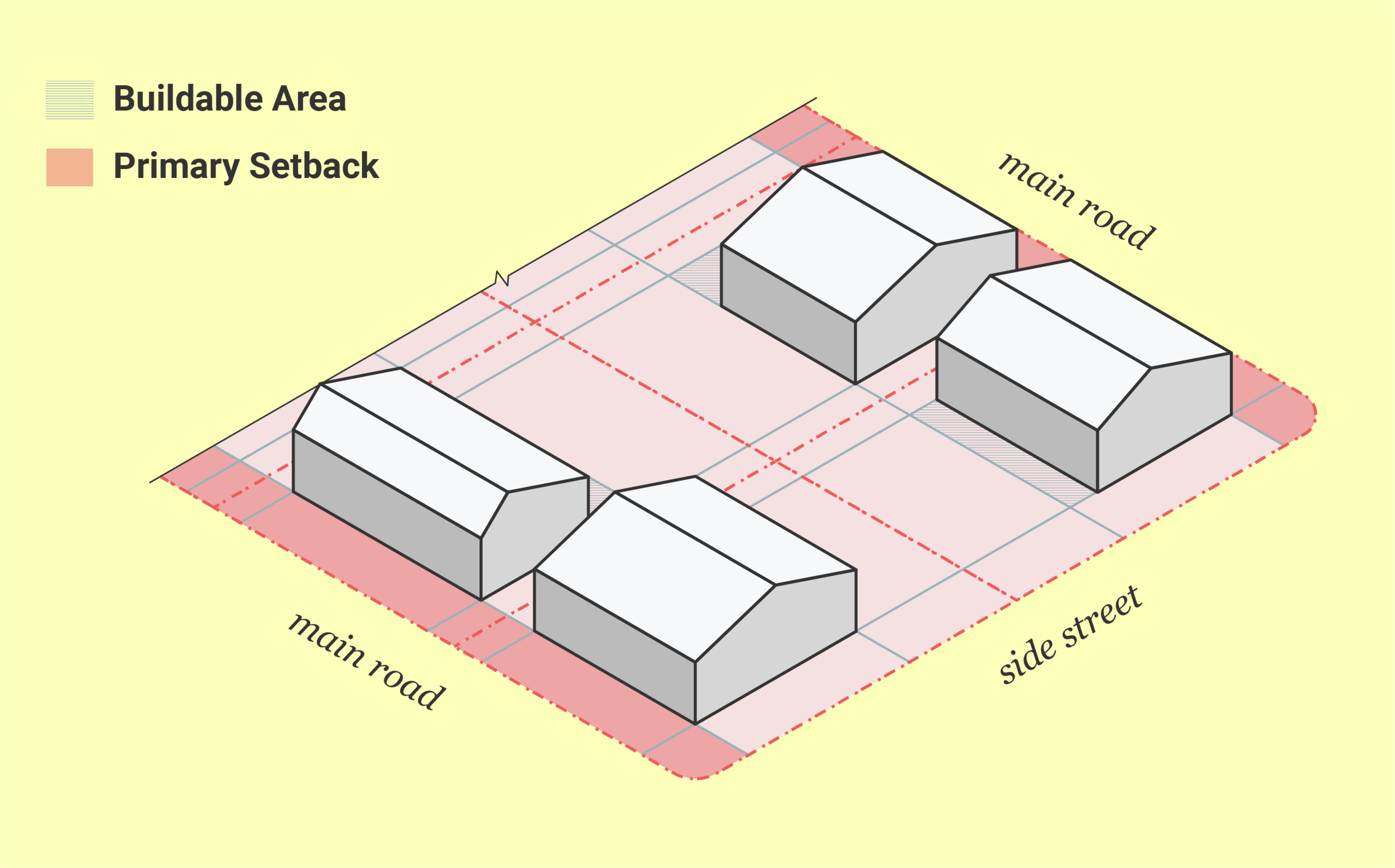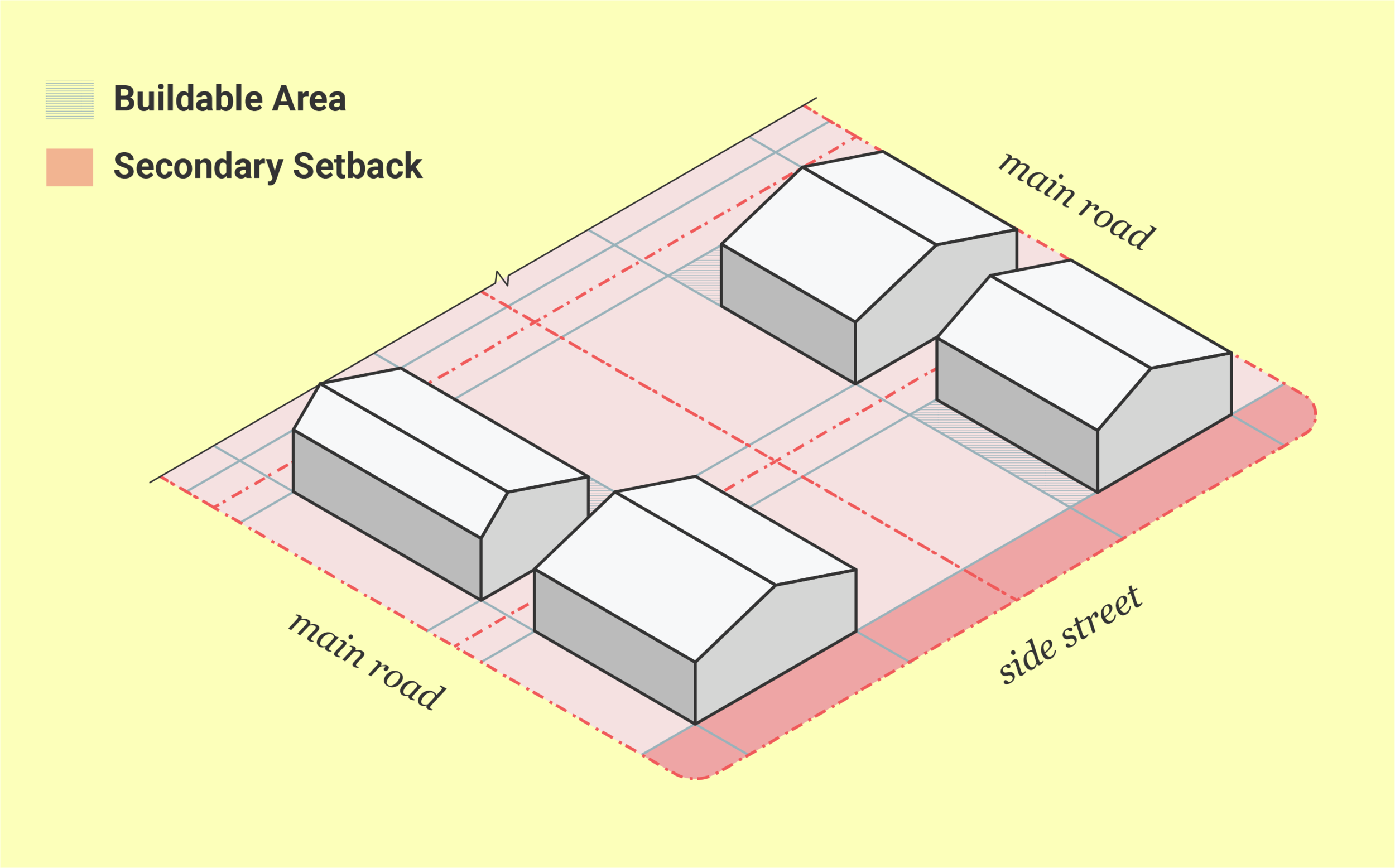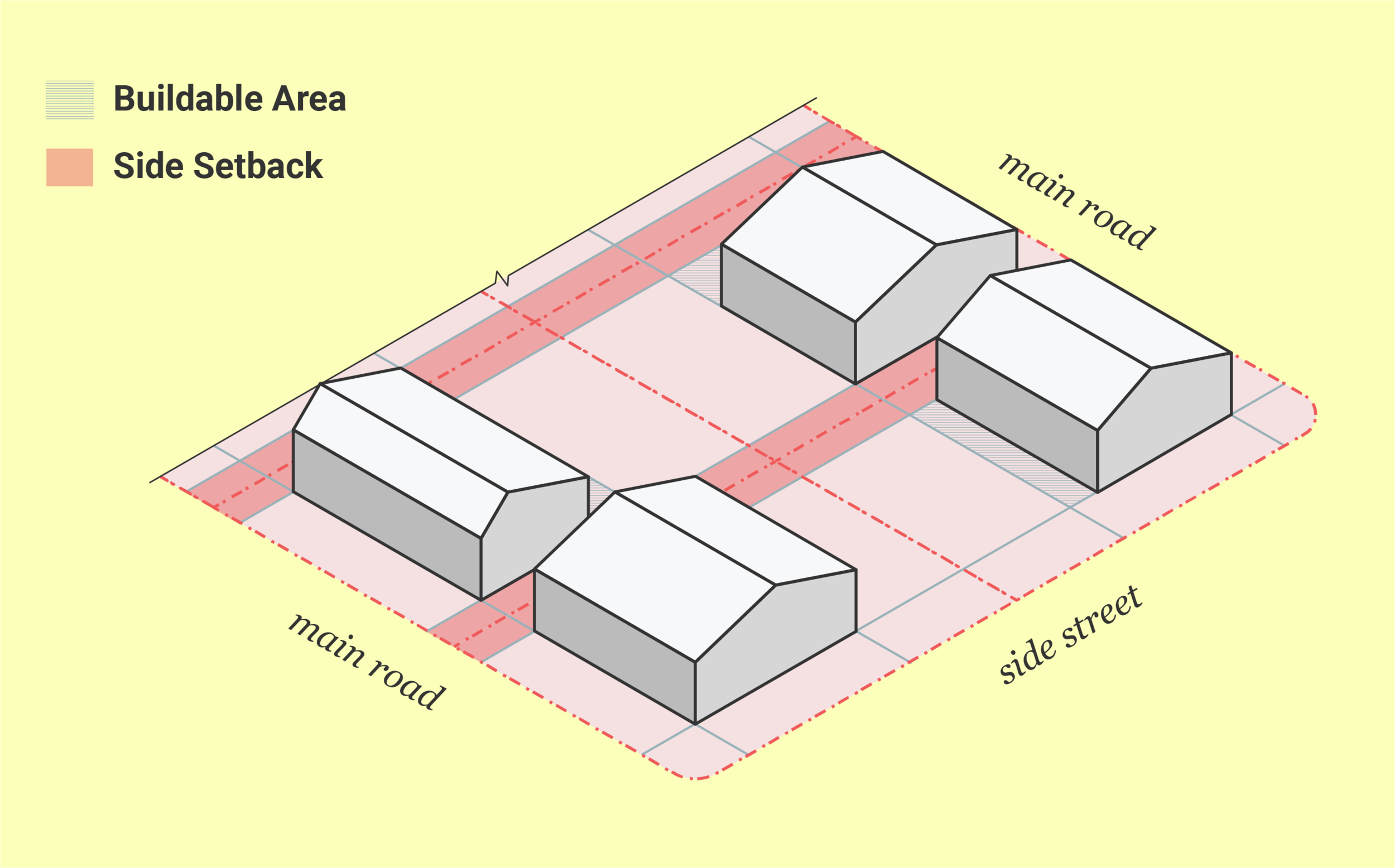Setbacks shape the pedestrian experience. They regulate whether a pedestrian will encounter ground floor shops and cafes as they walk down a street, or lawns that separate them from building activity, while providing privacy to building dwellers. Setbacks also control minimum building separation.
A Setback is the minimum required distance between the building and a lot line, waterway, street or road, measured perpendicular to the reference line. Setbacks define the perimeter of the lot’s Buildable Area, which is the region within the lot where the building can be placed.
Primary or Front Setback
The Primary Setback, also known as Front Setback, is the one facing the main right-of-way, such as a road. In case of corner lots, it is the one facing the main road. If both roads are of equal importance, then the corner lot may have two Primary (or Front) Setbacks.
Secondary or Side-Street Setback
The Secondary Setback, also known as Side-Street Setback, is the one facing the secondary right-of-way in a corner lot. This is usually the road with less pedestrian and vehicle traffic, number of lanes, etc.
Side Setback
The Side Setback is the one in between lots, perpendicular to the main road.
Rear Setback
The Rear Setback is the one in between lots, opposite to the main road.









